In crypto, great ease often comes with significant risk. Binance P2P is an example of this — the platform has become a risky terrain for many P2P traders. Binance P2P scams are on the rise, with even the most experienced peer-to-peer professionals succumbing to fraudsters’ traps every so often.
This guide covers every type of Binance P2P scam in detail, with real examples and concrete and foolproof steps to navigate them. Here’s how to stay safe on Binance P2P.
KEY TAKEAWAYS
➡ Scammers use advanced tactics like fake receipts, chargebacks, and identity theft.
➡ Always verify payments directly through bank accounts—not SMS or emails.
➡ Legal recourse is challenging; thorough documentation and awareness are critical.
- What are Binance P2P scams?
- Is Binance P2P risky?
- P2P scams in developing countries
- How to protect yourself from Binance P2P scams
- Will Binance refund if scammed?
- P2P scams: Case studies
- The rise of P2P fraud in India
- Global impact: Other P2P scams around the world
- Binance P2P alternatives and competitors
- Can you elimiante Binance P2P scams?
- Frequently asked questions
What are Binance P2P scams?
Binance P2P scams are fraudulent activities where bad actors exploit the peer-to-peer platform to deceive users during the buying and selling of cryptocurrencies.
These scams often involve tactics like fake payment receipts, chargebacks, or falsely claiming non-receipt of funds. Although Binance offers an escrow service, these scams bypass the protection by leveraging off-platform methods and creating a false sense of security for inexperienced traders. The key is to remain vigilant and double-verify every step of the transaction.
Is Binance P2P risky?
Scams are rife in decentralized ecosystems, and the Binance P2P trading platform is not immune to such threats. The platform is designed for like-minded individuals to buy and sell Bitcoin (BTC), USDT, and other popular crypto assets directly among themselves.
The centralized exchange (CEX) only acts as a facilitator; it doesn’t charge overheads and offers a simple and intuitive process for buyers and sellers alike. However, the space also plays host to a number of unscrupulous actors. In 2025, the platform is rife with individuals looking to dupe unwitting users who aim only to engage in legitimate P2P trading.
An example of a suspicious request on Binance P2P:

A hypothetical example
Here is a quick example of how a Binance P2P transaction is supposed to work:
Sponsored- A (Seller): A wants to sell 1 BTC.
- B (Buyer): B wants to buy 1 BTC.
- Agreed Price: $50,000 for 1 BTC.
- Payment Method: Bank Transfer.
Step-by-step transaction process
- Listing the offer
- A lists an offer to sell 1 BTC for $50,000 on Binance P2P.
- Finding the offer
- B searches for offers to buy 1 BTC and finds A’s listing.
- B decides to accept A’s offer and initiates the trade.
- Initiating the trade
- B clicks on the offer and agrees to the terms.
- B then confirms the trade, indicating an intention to buy 1 BTC from A.
- Payment instructions
- A provides B with the bank account details for the transfer.
- B proceeds to make the payment of $50,000 to A’s bank account.
- Escrow service
- Binance’s escrow service holds the 1 BTC from A during the transaction process.
- This ensures that A cannot withdraw or use the BTC while the transaction is being completed.
- PaymentcConfirmation
- B completes the bank transfer of $50,000 and marks the payment as “Paid” on Binance P2P.
- A receives a notification that the payment has been made.
- Verification
- A checks the bank account to confirm the receipt of $50,000 from B.
- Upon confirmation, A releases the 1 BTC from the escrow to B.
- Completion
- The 1 BTC is transferred to B’s Binance wallet.
- The transaction is marked as complete, and both parties can leave feedback for each other.
Did you know? Binance P2P isn’t a completely decentralized exchange (DEX). Even though Binance provides the escrow service, which holds funds to prevent scams, it’s still possible for scammers to manipulate outside channels—like fake bank receipts, payment reversals, or exploiting identity theft loopholes. Always double-check with your bank to confirm receipt!
Throughout this guide, you will continue to encounter the A-B example to demonstrate the breadth and common themes of Binance P2P scams.
P2P scams in developing countries
It is a common observation that most Binance P2P scams occur in developing nations. Here’s why:
- Lack of reliable financial infrastructure
- Low crypto liquidity
- Underwhelming services offered by local exchanges
- High adoption rates
- Economic incentives
- Limited awareness and crypto-education
- Inefficient crime-nabbing infrastructure
- Certain geographical subsidiaries like Binance U.S. do not offer P2P trading.
Fact check:
In regions with lower awareness, fraudsters often impersonate Binance support agents, tricking users into releasing funds by claiming there are “account issues” that need immediate attention.
Common types of Binance P2P scams
Here are some common Binance P2P scams you should be aware of.
Payment fraud
Scenario: A (Seller) lists an offer to sell 1 BTC for $50,000. B (Buyer) agrees to the trade and claims to have made the payment but never actually transfers the $50,000. A, believing the payment has been made, releases the BTC from the escrow service, only to realize later that the payment was never received.
Actual example: In July 2023, two individuals were arrested in Ujjain, India, for running such a scam. They used counterfeit IDs and personal data to create fraudulent accounts on Binance P2P.
The scammers sent fake SMS messages to sellers, mimicking bank notifications that falsely indicated the payment had been made. The unsuspecting sellers, believing the SMS notifications, release their Bitcoin (BTC) or other cryptocurrency without actually receiving the funds.
The fraudsters exploited free SMS platforms to send these false messages, which resulted in significant financial losses for the victims.
Chargeback fraud
Scenario: B (Buyer) completes the payment and receives 1 BTC from A (Seller). Later, B initiates a chargeback with the bank, reversing the $50,000 payment. A loses both the BTC and the payment.
Did you know? In one reported case in Nigeria, a trader sold BTC worth approximately $5,000. The buyer made the payment using a bank transfer, and the seller, after confirming the receipt of funds, released the BTC. However, the buyer later initiated a chargeback, claiming the transaction was unauthorized. The bank reversed the transfer, and the seller lost both the BTC and the $5,000.
Identity theft
It is not just about A and B anymore. Identity theft presents another scenario:
Scenario: C (Scammer) uses a stolen identity to create a fake account and poses as either A (Seller) or B (Buyer). If C poses as A, they might disappear after B makes the payment. If C poses as B, they might scam A using fraudulent payment methods.
The case of identity theft is growing in countries like India, where individuals who require funds may voluntarily sell their account info to scammers, usually Buyers, who then buy crypto from regular sellers and transfer funds. When they disappear, the person “C,” who didn’t get anything despite the promises, lodges an official complaint, and the fund tracking takes the authorities to the seller’s account. This then gets frozen, or the amount received is locked as a bank lien.
Though not directly related to Binance, here is a real-life example of how identity theft goes down:
Bryan Alan Sparks and Autumn Gail Luna used stolen identities to apply for various COVID-19 relief benefits and open bank accounts. Between March 2020 and January 2021, they used the identities of more than 50 individuals to claim approximately $1.98 million in benefits, including unemployment aid and small business loans.
“In each case, scammers use common tactics. They pretend to be a trusted source, like a store or a bank. “
Matt Pollard, Bank Hawaii: YouTube
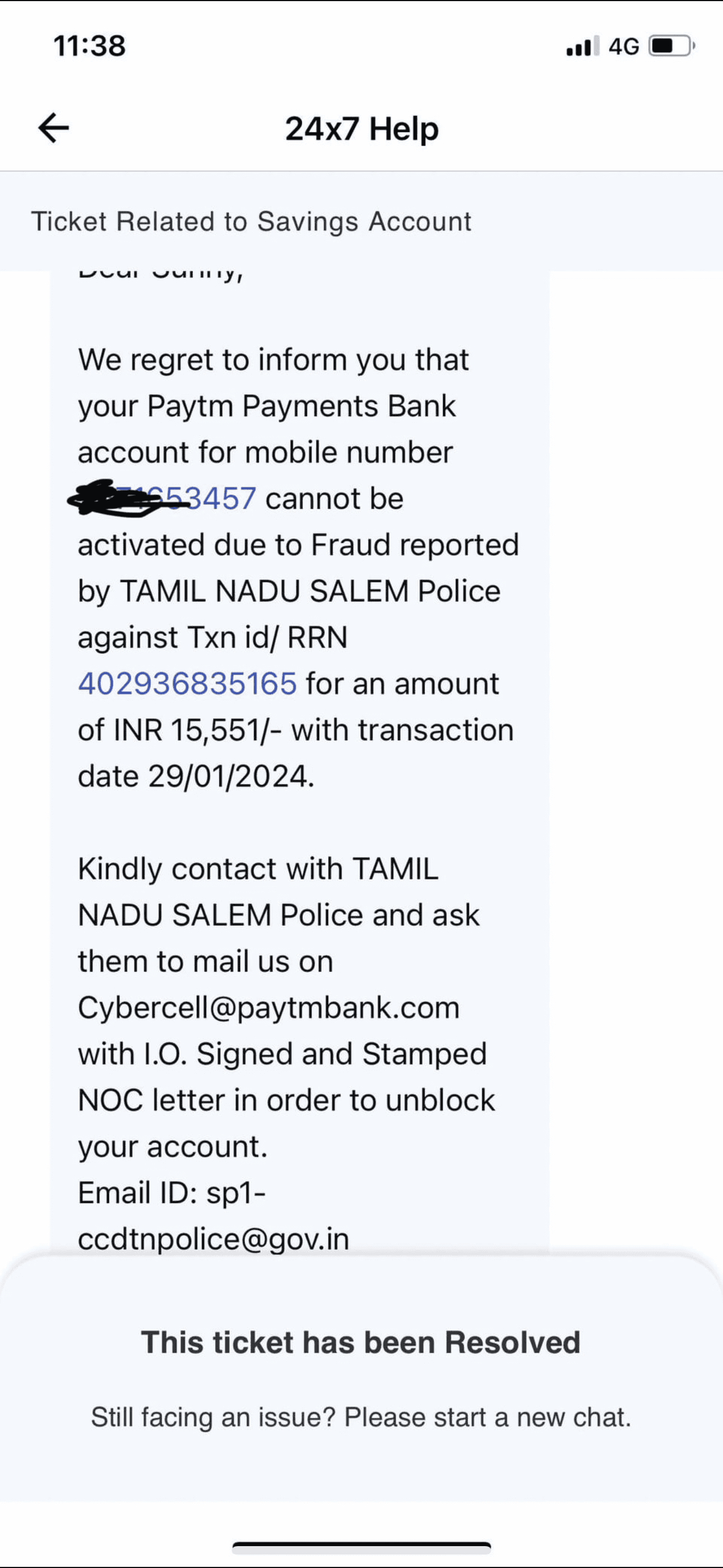
Money laundering
Scenario: B could be using illicit funds to buy BTC from A, using a P2P platform to clean the money.
The idea here is simple. Scammers who have duped others try to purchase cryptocurrency from unwitting sellers, dumping the illegally procured funds in their accounts. If and when an investigation starts, it is the seller who faces the heat.
Did you know?
In November 2023, Binance and its CEO Changpeng Zhao (CZ) pled guilty to violating the Bank Secrecy Act (BSA) and failing to implement effective AML controls. This failure allowed money laundering activities to flourish on the platform.
In November 2023, Binance and its CEO Changpeng Zhao (CZ) pled guilty to violating the Bank Secrecy Act (BSA) and failing to implement effective AML controls. This failure allowed money laundering activities to flourish on the platform.
The Department of Justice (DOJ) found that Binance’s inadequate compliance measures facilitated illegal transactions, including those involving terrorist financing, cybercriminals, and other illicit actors.
Sponsored SponsoredHow to protect yourself from Binance P2P scams
To use Binance P2P platforms safely, you should consistently follow a set of practices. This section outlines the requisite steps P2P traders must take to protect themselves.
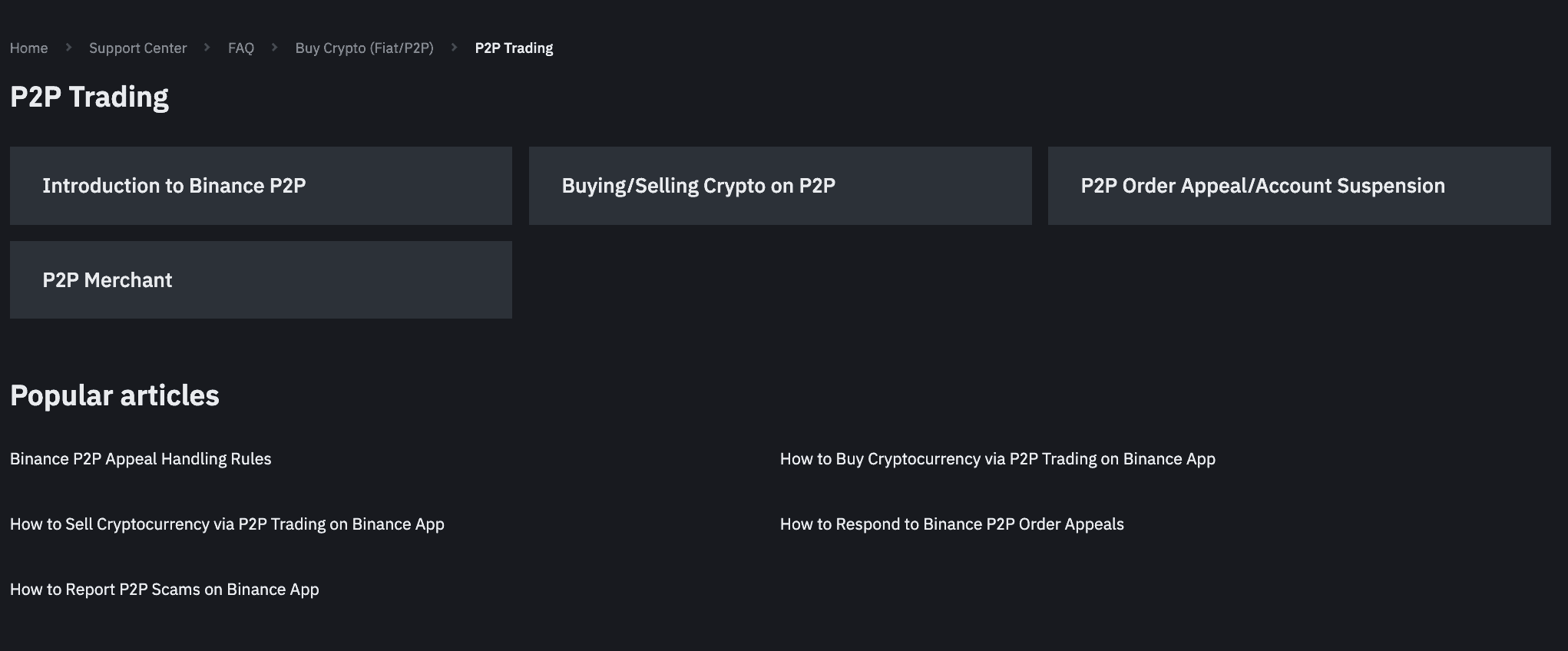
Tips to avoid payment fraud
- Verify payments: Always check your bank account to confirm that you have received the funds before releasing the cryptocurrency.
- Use secure payment methods: Opt for payment methods that offer real-time confirmation and are less prone to chargebacks.
- Stay within the platform: Conduct all communications and transactions within the Binance P2P platform to utilize the escrow service and maintain a transaction record.
- Double confirmation: Use two-factor authentication (2FA) to confirm significant actions like releasing funds.
Did you know? Scammers are now using deepfake technology to impersonate users in video calls. This tactic has been seen in high-value trades, making it harder for victims to verify the identity of their counterparty even with video verification.
Avoiding chargeback fraud
- Use secure payment methods: Prefer payment methods that are less prone to chargebacks, such as bank transfers and wire transfers that offer more finality.
- Confirm buyer identity: Verify the buyer’s payment details and ensure they match the information on their verified account.
- Transaction history check: Trade with users who have a high completion rate and positive feedback on their transaction history.
- Use third-party escrow services: Consider using additional third-party escrow services specializing in high-value transactions.
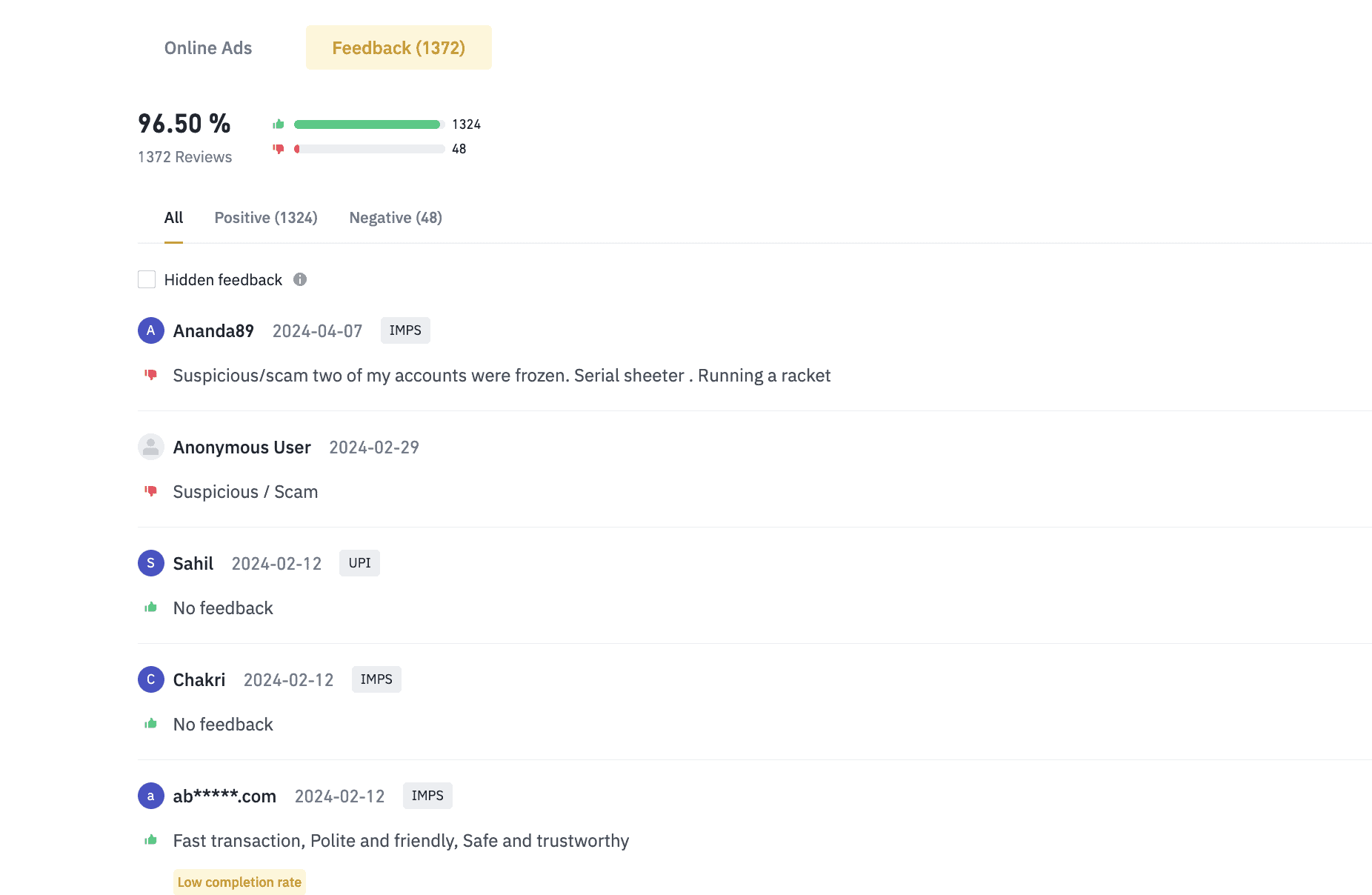
Tips to avoid identity theft
- Verify counterparty identity: Always verify the identity of your trading partner. Check their Binance P2P profile for verification badges and trading history.
- Use KYC processes: Utilize Binance’s KYC (Know Your Customer) process to ensure you deal with verified users.
- Communicate within the platform: Keep all communications and transactions within the Binance P2P platform. This helps to maintain a record of the transaction and provides recourse in case of disputes.
- Report suspicious activity: If you suspect that your counterparty is using a stolen identity or fake documents, report the activity to Binance immediately. Avoid completing the transaction until the issue is resolved.
Fact check:
In a recent case in Southeast Asia, scammers created a fake “VIP trading group” promising high returns to entice P2P users. Victims were encouraged to make multiple P2P trades within the group, with initial small profits. Eventually, once a substantial amount was invested, the scammer disappeared along with all the funds.
Tips to avoid the after-effects of money laundering
- Verify buyer/seller identity: Ensure that your trading counterparties are verified users. Utilize Binance’s KYC processes.
- Monitor transactions: Be vigilant about unusual or large transactions that might indicate money laundering activities.
- Use secure payment methods: Opt for payment methods that offer traceability and comply with AML regulations.
- Report suspicious activities: If you suspect any illegal activities, report them immediately to Binance and relevant authorities.
- An underrated idea — enhanced due diligence: For high-value or suspicious transactions, conduct enhanced due diligence by requesting additional documentation or information about the source of funds.
Here is a detailed thread that can help:
Besides the mentioned strategies, you can even connect with known users on Binance to facilitate payments.
You can also:
- Ask the user to verify the source of funds
- Ask for additional KYC documentation followed by a live interaction to match the KYC details
- Ensure the presence of the same person behind the screen
The above points represent lesser-known but solid high-level strategies to employ to avoid being scammed.
Getting legal aid
If it’s already too late for protective measures, both sellers and buyers can consider legal recourse. However, while this is technically an option, it’s often a difficult path to travel. Blockchain and FinTech lawyer Pawan Laddha spoke with BeInCrypto about the practicality of utilizing legal help, particularly in countries where many aren’t aware of P2P fundamentals.
“Driving the legal system for redressal in crypto P2P scam cases is an uphill battle. The lack of clear regulations and complexity of the fundamentals of peer-to-peer transactions, decentralized ledgers, and the pseudonymous nature of crypto wallets among law enforcement officials makes it incredibly challenging to seek justice.
The legal status of cryptocurrencies themselves remains a gray area, with no single comprehensive legislation governing their use.
Pawan Laddha, senior partner at AMLEGALS and blockchain/FinTech lawyer
Will Binance refund if scammed?
In most cases, Binance doesn’t guarantee refunds. However, the peer-to-peer crypto exchange does work closely with law enforcement to handle scams and frauds.
Also, if the scam has been initiated (willingly or unwillingly) by a Binance P2P merchant, refunds can be a potential solution. Each merchant needs to deposit at least 2000 USDT with Binance or have this amount in a funding wallet as a sign of credibility.
Fact check:
In 2024, Binance expanded this to 5,000 USDT for high-volume traders to ensure a higher level of accountability.
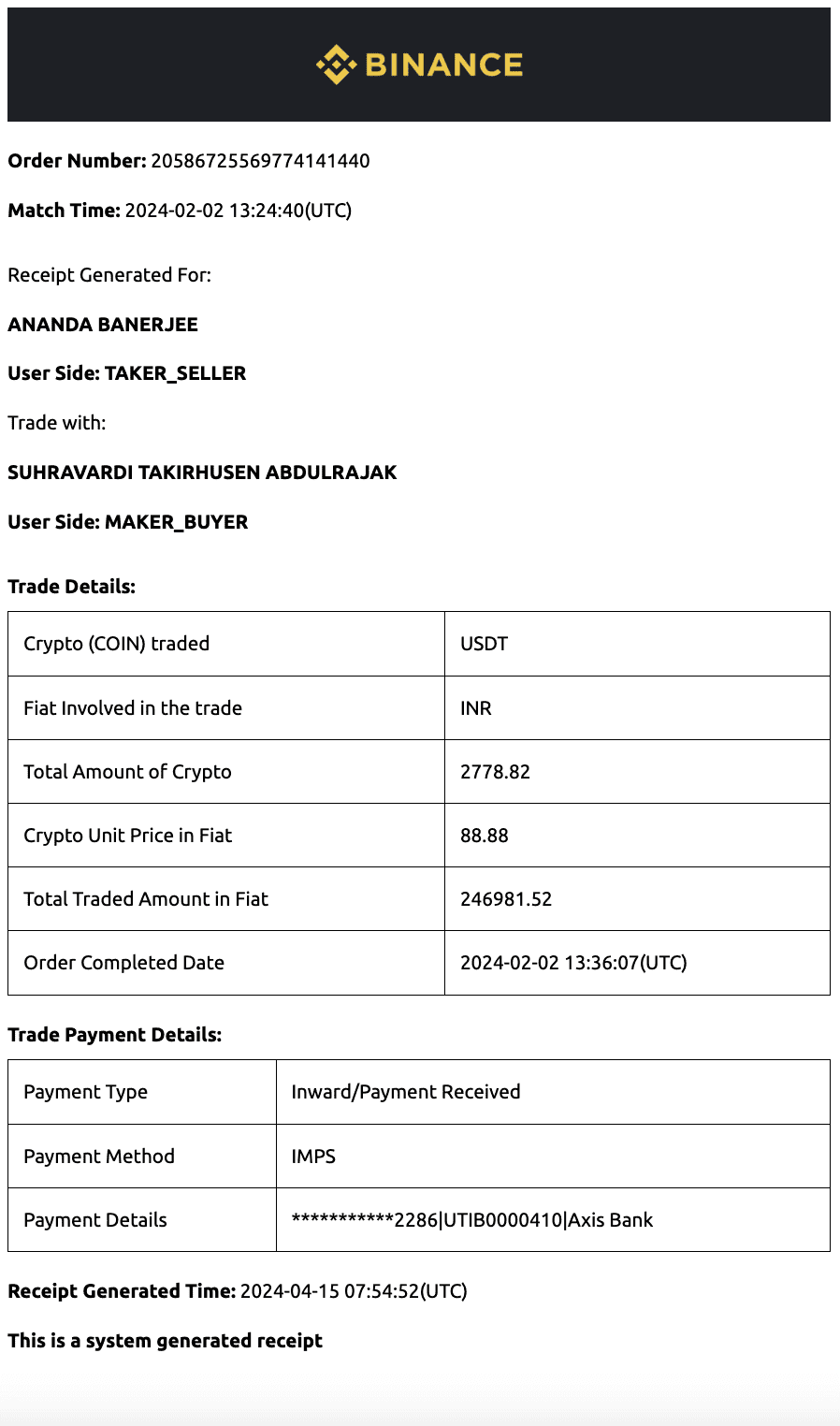
P2P scams: Case studies
Diving into real-life examples is one of the best ways to understand scams and the possible solutions. Here’s the experience of BeInCrypto writer Ananda Banerjee.
What happened
Ananda received his January salary in crypto. In early February, he decided to off-ramp his crypto earnings — selling USD using Binance’s P2P platform.
Ananda chose the Express P2P order option and was automatically matched with a buyer offering a decent price to buy USDT. After verifying that the funds came from a legitimate source and noting the buyer’s positive feedback, he completed the sale.
A month later, Axis Bank, where Ananda holds his account, placed a lien on the transaction amount following a complaint from the Cyber Crime section of Gurugram, Haryana. Additionally, a similar complaint was raised from Rajkot, Gujarat. This indicated that the funds Ananda received were acquired illegally by the buyer.
What this means
The complaints and the subsequent lien on Ananda’s account imply that the buyer who purchased crypto from Ananda used illicitly obtained funds. This could also be a case of identity fraud, where the verified buyer might have used someone else’s account to transfer funds.
However, the situation remains unclear due to the less-than-cooperative nature of police and banking officials in India. They often do not disclose the complete report of what transaction was flagged and why it was flagged. Despite Ananda not being a trader and simply receiving his salary in crypto, police questioned how he received his funds, demonstrating a lack of understanding of international salary structures.
Did you know?
Binance has intensified its cooperation with global law enforcement agencies in 2024, particularly in regions like Europe and Southeast Asia, to fast-track investigations and freeze merchant accounts in the event of confirmed scams.
Ananda’s actions
- Tracking funds: Ananda is regularly tracking the fund transfer of the wallet to which the crypto was sent via Etherscan, monitoring for any movement.
- Legal steps: With Binance agreeing to comply with Financial Intelligence Unit (FIU) registrations, Ananda is looking to connect with a crypto lawyer to move the proceedings forward. He is determined to recover his hard-earned salary money and prove his innocence.
Here is the letter Ananda received from the bank. Notice how key information isn’t disclosed:
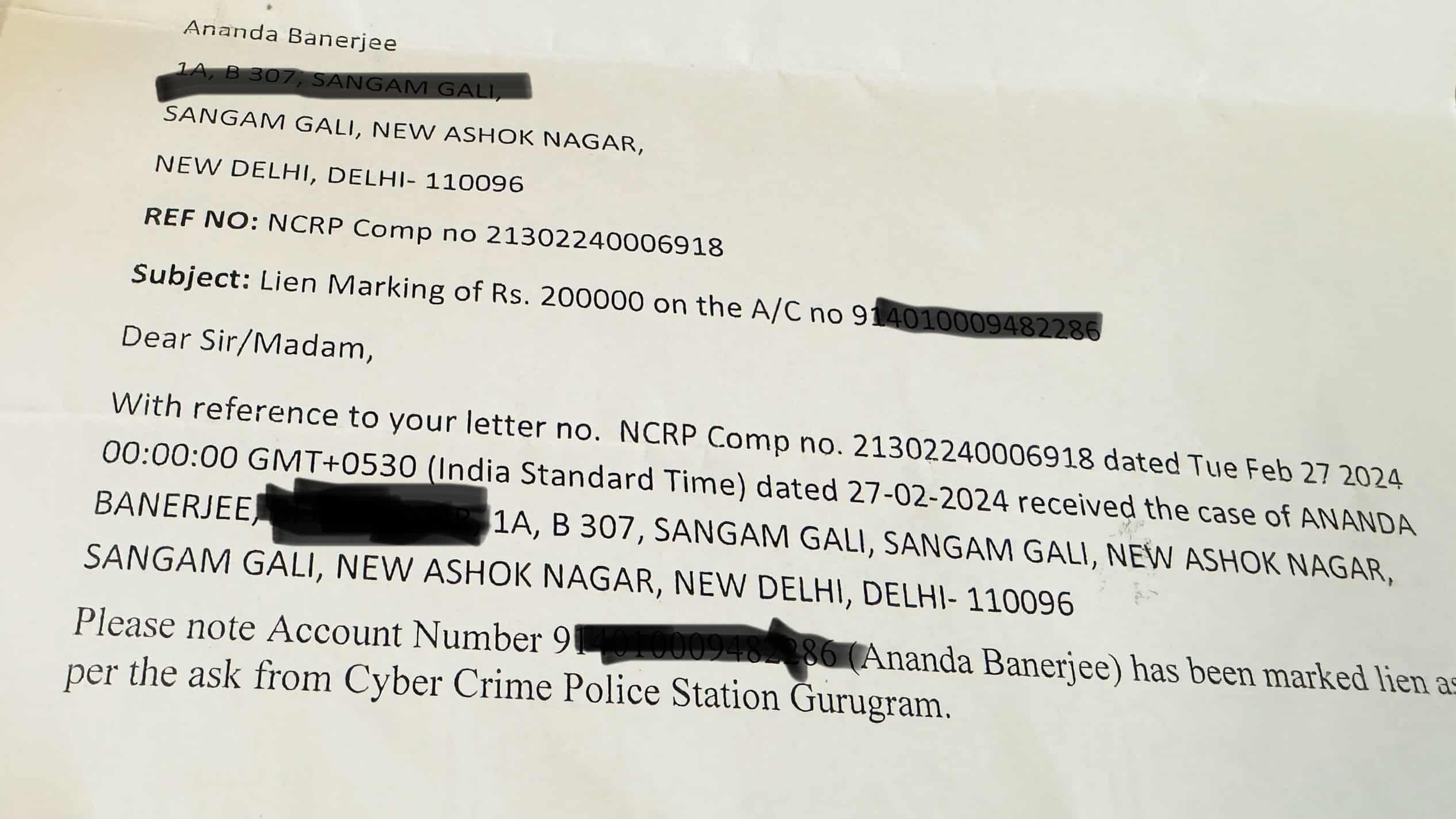
This case highlights the importance of thorough verification and cautious trading practices, even when using reputed platforms like Binance P2P. It also underscores the challenges faced by crypto users in India due to regulatory and legal ambiguities.

Highlighted problems
- Difficult follow-ups: The need to interact with distant police officials and the lack of cooperation from local authorities make resolution challenging.
- Inefficient tracking: The multi-layered movement of funds before reaching the final recipient complicates the tracking process and often leads to innocent individuals being penalized.
- Lack of awareness: Police and banking officials’ limited understanding of cryptocurrency transactions and international salary structures further exacerbates the issue.
- Validating funds: The challenge for authorities is to validate the origin of the funds and trace the scammer, while innocent traders are caught in the crossfire.
Recent development:
As of late 2024, Ananda’s account is still locked, showcasing the inefficiecy of the law enforcement agency in India.
The rise of P2P fraud in India
Ananda’s scenario outline in our case study isn’t a one-off. The CryptoIndia subreddit further demonstrates the proliferation of scams on the platform across the region.
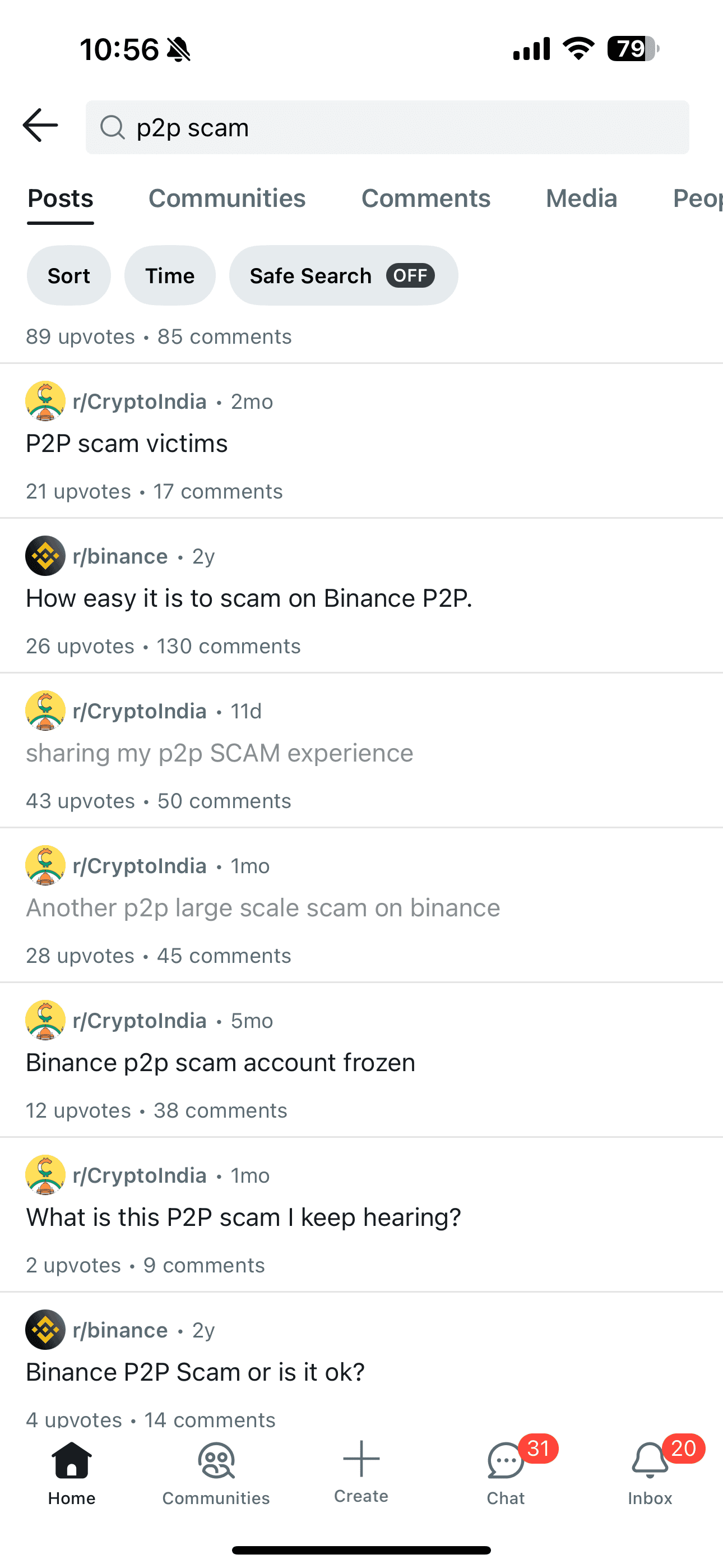
Every second day, a concern is raised by those engaged in P2P trading, showcasing how precarious the situation is.
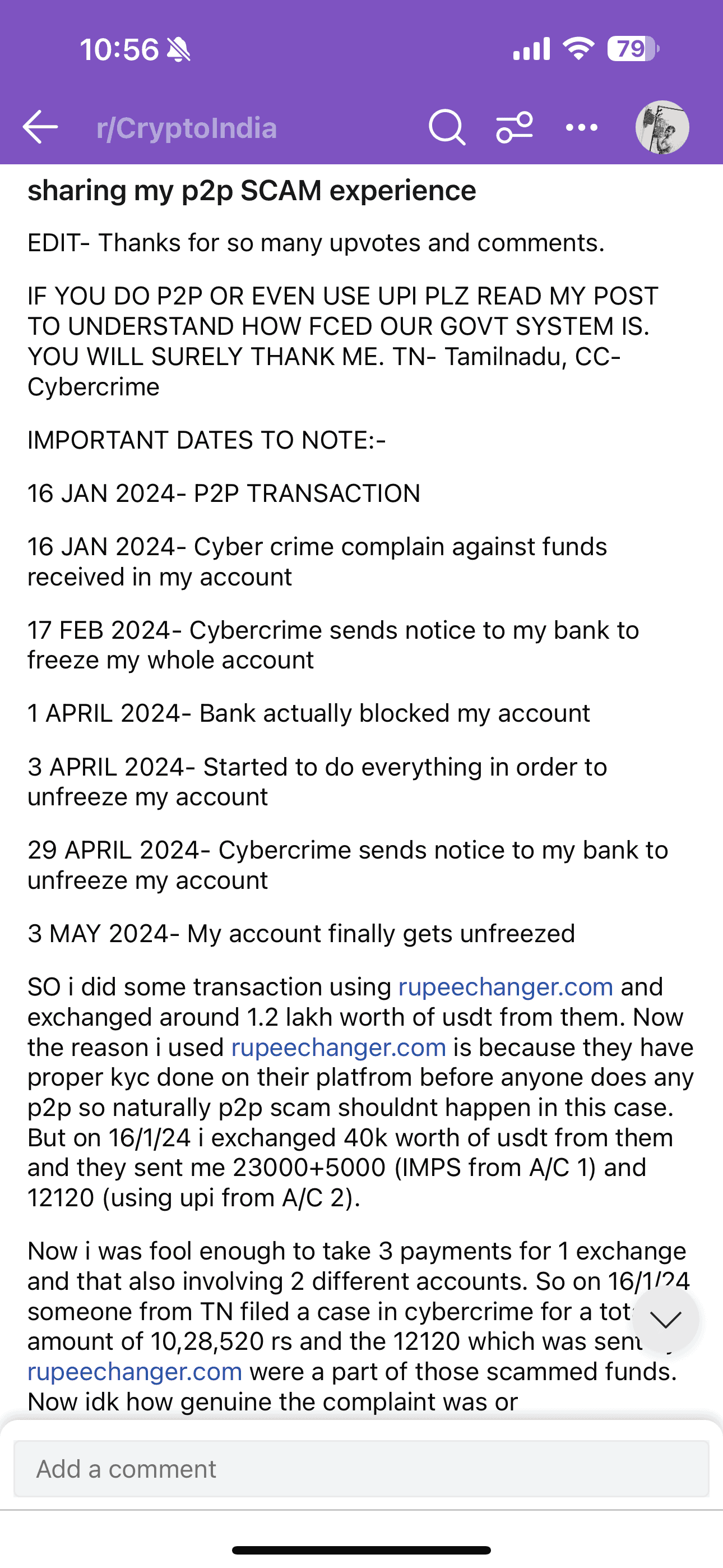
But then, people are optimistic about the fix, not because the government has started to pay attention but now that Binance has agreed to adhere to the FIU guidelines.
Here is what one trader had to say regarding FIU compliance:
“FlU compliance itself means that you are dealing with a trusted party and the Govt can’t hold you accountable for receiving funds from a compliant counterparty.
They will either remove the P2P feature or make sure it is somehow compliant. Expect more scrutiny when sending and receiving funds via the new Binance. It will definitely not be convenient, and funds might take longer to process, especially if they have doubts about the source.”
Anonymous P2P trader: Reddit
Global impact: Other P2P scams around the world
While India’s P2P markets are hotbeds for scams, numerous other instances of P2P and other exchange-specific frauds have surfaced globally. Here are a few notable ones:
Nigeria: Payment fraud via fake proof of payment
In Nigeria, scammers frequently use fake proof of payment to deceive sellers into releasing their Bitcoin (BTC) or other cryptocurrencies. A common method involves scammers sending fake bank transfer receipts or screenshots to the seller.
A seller received a fake bank notification from a scammer claiming to have transferred funds via GTBank. The seller, believing the notification to be genuine, released the BTC, only to find out later that the money was never deposited. This emphasizes the importance of verifying payment by logging into your bank account rather than trusting notifications.
Recent development:
Scammers are now using automated bots to generate fake receipts almost instantaneously, mimicking genuine alerts from banks like GTBank and UBA.
Kenya: Man-in-the-middle scams
In Kenya, a common scam involves a man-in-the-middle attack, where the scammer intercepts communications between the buyer and seller, facilitating a fraudulent transaction.
A scammer posed as both a buyer and a seller on Binance P2P. They directed a legitimate buyer to send payment to a legitimate seller while intercepting the communication. The seller, believing the payment was from the buyer, released the cryptocurrency to the scammer’s wallet. The bank involved was Equity Bank. This type of scam can be prevented by ensuring all communication is conducted within the P2P platform.
Sponsored SponsoredFact check:
In 2024, scammers have begun leveraging encrypted messaging services like Signal and WhatsApp, making it harder for law enforcement to trace their communication trails. As of August 2024, the Kenyan Police’s Cybercrime Unit noted a 45% increase in reported man-in-the-middle attacks, specifically on platforms like Binance P2P and LocalBitcoins.
Brazil: Fake escrow services
In Brazil, scammers set up fake escrow services to conduct P2P transactions. These malicious actors create professional-looking websites or services that appear legitimate but are designed to steal funds.
A seller agreed to use an escrow service suggested by the buyer. The service looked professional, with a well-designed website and customer support. However, after the buyer sent the payment to the fake escrow service, the seller never received the cryptocurrency, and the escrow service disappeared. Banco do Brasil was mentioned in the complaint filed by the victim. This scam underscores the importance of using only well-known and verified escrow services provided by reputable P2P platforms.
South Africa: Chargeback fraud
In South Africa, chargeback fraud is common. Her,e scammers use reversible payment methods like credit cards to reverse payments after receiving the cryptocurrency.
A seller received a payment via the First National Bank (FNB) credit card and released the cryptocurrency. A few days later, the seller was notified by the bank that the payment had been reversed due to a chargeback request from the buyer. The seller lost both the cryptocurrency and the payment, illustrating the risks associated with accepting reversible payment methods on P2P platforms.
Recent development:
Scammers now use delayed settlement systems via smaller, less-regulated banks to reverse payments up to a week after they’re completed. Victims often don’t realize until much later when the payment status is quietly reversed, making it harder to claim back funds.
And it’s not just Binance. Other exchanges in other countries have also seen a surge in such instances.
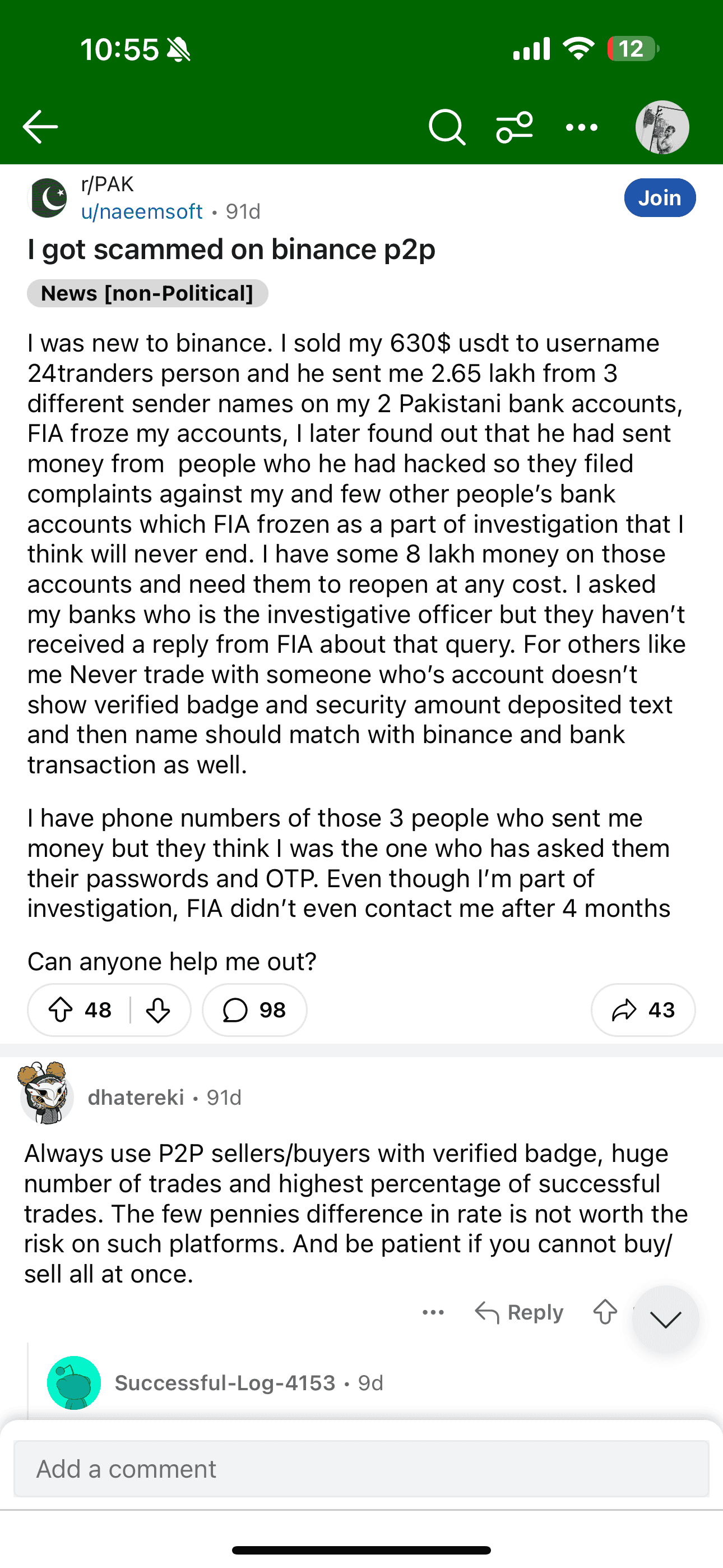
Canada: Fake technical support scam
In Canada, a prevalent P2P scam involves fraudsters impersonating technical support staff from well-known cryptocurrency exchanges like NDAX or Shakepay. They contact victims through unofficial channels such as social media or messaging apps, claiming that their accounts have issues that need urgent attention.
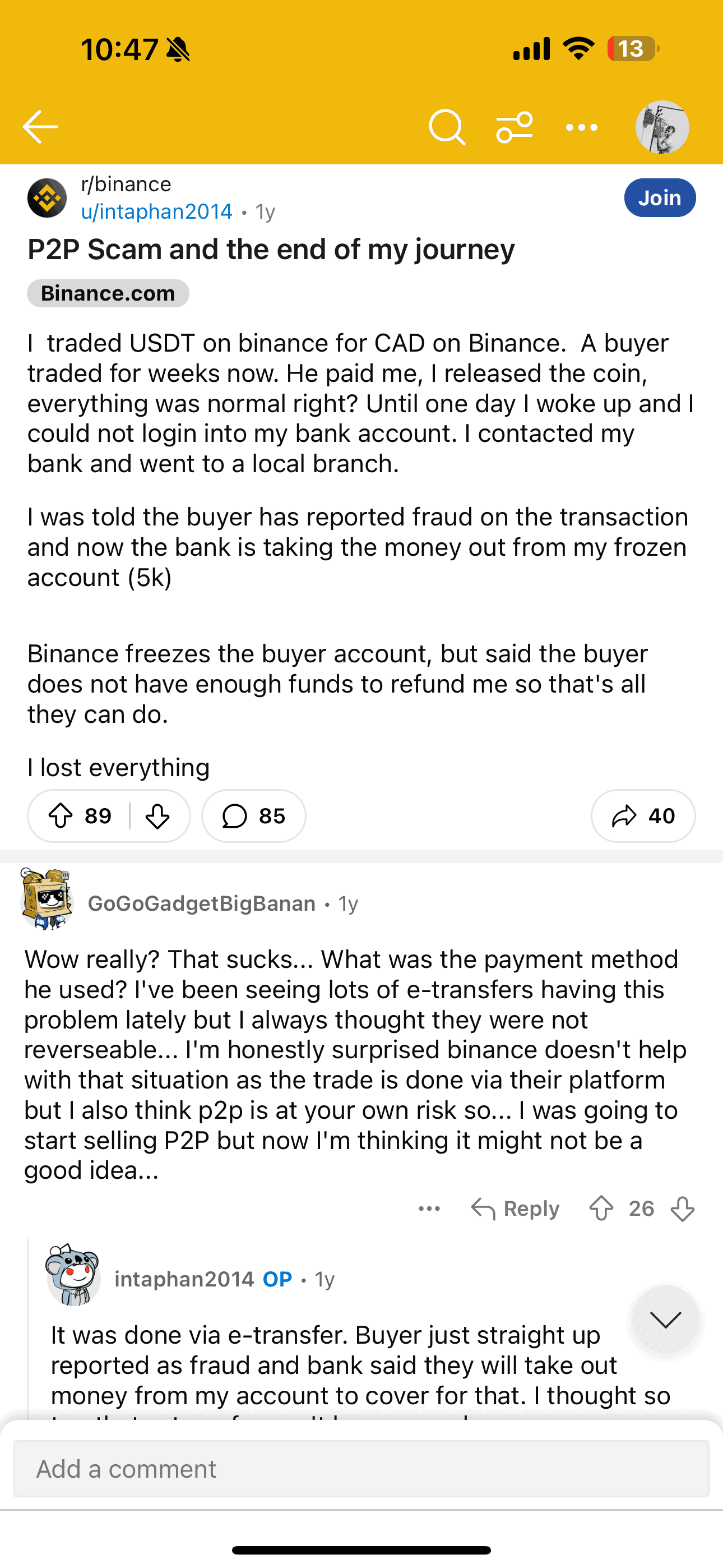
A victim received a message on Telegram from someone claiming to be NDAX support, stating there was suspicious activity on their account. The scammer asked for login credentials and remote access to their device. Once they got access, the scammer initiated unauthorized transactions, transferring funds out of the victim’s account. This highlights the importance of only communicating through official channels and never sharing login details.
Recent development:
Scammers are now employing AI voice synthesizers to replicate the voices of known customer service agents from major exchanges like Binance, NDAX, and Shakepay. In one recent case in May 2024, a user in Toronto received a call from what seemed to be an NDAX support agent.
Philippines: SIM swap attacks
Philippines saw a sharp rise in SIM swap attacks targeting P2P traders. Scammers obtain personal data and use it to convince telecom companies to swap the victim’s phone number onto a new SIM card. This allows them to bypass two-factor authentication (2FA) and gain access to Binance P2P accounts.
One high-profile case in Manila involved a trader losing nearly $40,000 worth of USDT after a scammer successfully executed a SIM swap, gained control of the trader’s Binance account, and liquidated their holdings within minutes.
Pro Tip: Use hardware-based 2FA like Google Authenticator or Authy rather than SMS-based 2FA, especially in regions where SIM swap attacks are common.
Binance P2P alternatives and competitors
If you want to try out other P2P platforms, here are some of the Binance alternatives or, rather, Binance competitors to consider:
OKX
- Competes with the largest P2P exchanges in terms of liquidity
- Zero fees on P2P trading
Bybit
- Focus on crypto security and robust escrow services
- Relatively low reports of operational scammers, as it is not as popular as Binance
LocalCoinSwap
- Supports multiple cryptocurrency pairs
- 24X7 support and user-controlled wallets
Hodl Hodl
- Options at par with Binance P2P payment methods
- Non-custodial escrow service
In addition to the mentioned names, you can also use other platforms, including Bisq and Paxful, to buy and sell crypto among peers.
Can you elimiante Binance P2P scams?
If buyers and sellers remain vigilant, scammers may begin to realize that operating successfully on this platform is no longer feasible. However, even with the strongest crypto security standards, you cannot expect crypto scams to end anytime soon. Opportunists and bad actors will likely always operate within emerging and decentralized ecosystems.
To combat these threats, the focus should be on improving the quality of issue handling and legal avenues offered to those who fall victim to scammers, plus improving education and awareness around platform risk. Information is key. By being aware of the Binance P2P scams listed in this guide, users can take the necessary steps to protect themselves and their crypto assets when trading on the platform.

